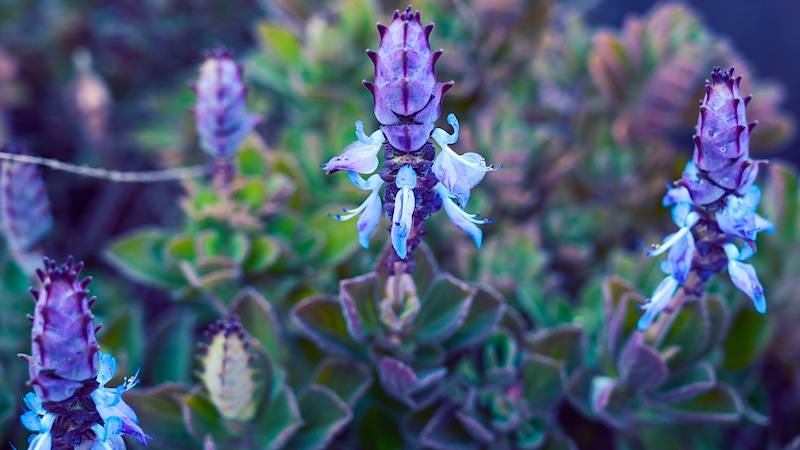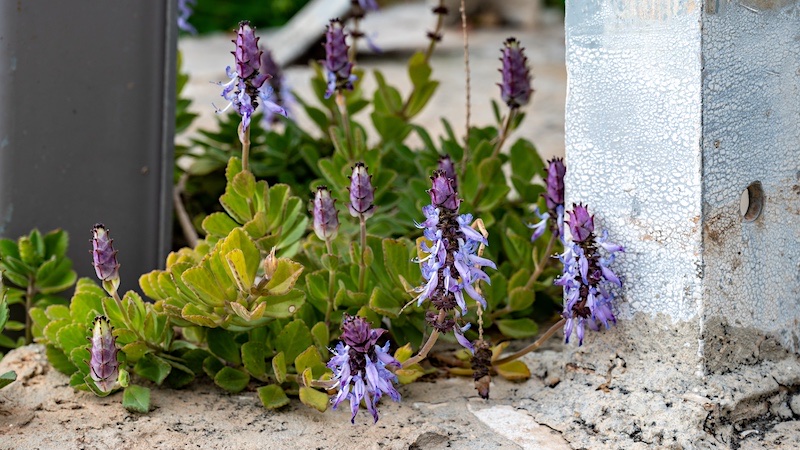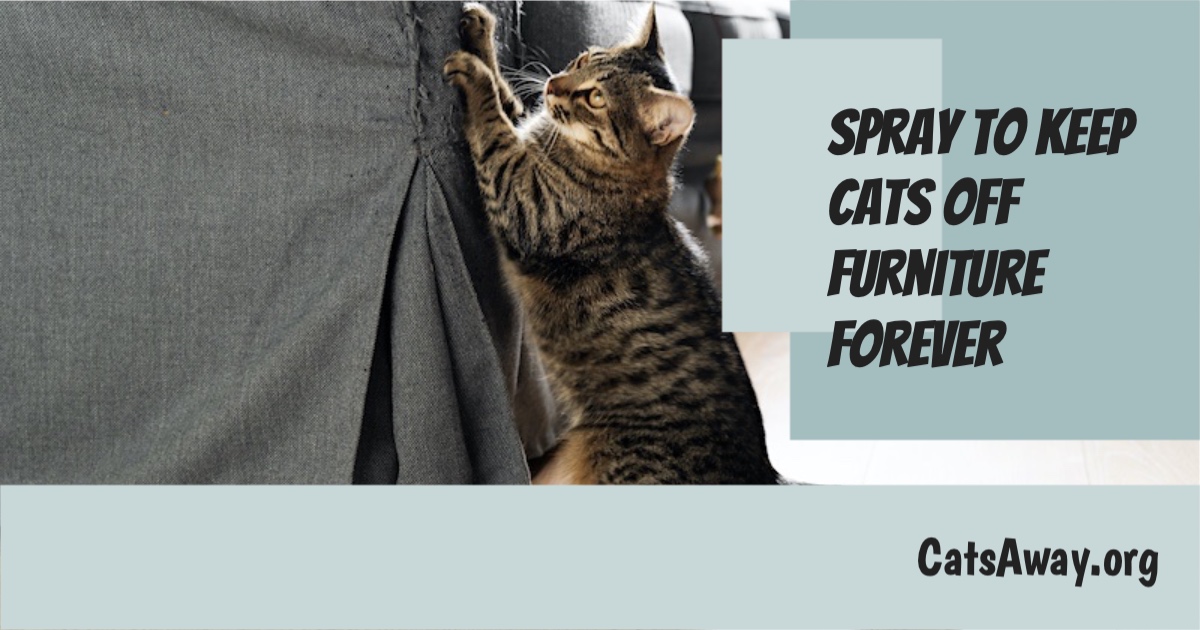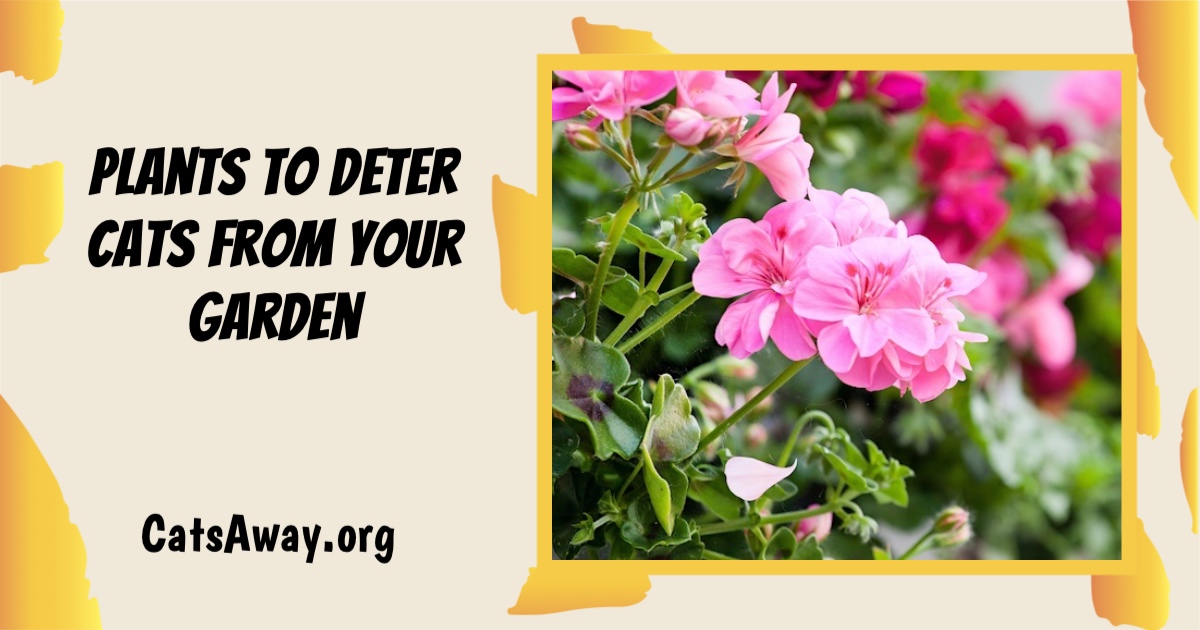Do you have a garden that is being overrun by neighbourhood cats? Or an indoor cat who needs extra attention and care? Coleus canina, also known as the scaredy cat plant, may be just what you need.
This sun loving, drought tolerant and hardy plant has been used for centuries to deter cats from entering gardens or yards while its other uses make it a great addition to any home.
In this article we will discuss how coleus canina works as a cat deterrent, how to grow and maintain it, and explore some of its lesser-known applications. Read on if you want to learn more about this amazing little plant!
What is Coleus Canina?

Coleus Canina, also known as Coleus Caninus and the Scaredy Cat Plant is a species of flowering plant in the mint family. It was specifically bred as a plant to deter cats by a German botanist.
Its odor has been used for centuries to keep cats away from gardens and other areas where they are not wanted.
The plant grows up to two feet tall and produces small white flowers with yellow centers during its blooming season in late spring through early summer. The plant smells and has a strong scent that cats find unpleasant, making it an effective deterrent against them entering your garden or yard.
History
The use of Coleus Canina dates back hundreds of years when it was first used by ancient Greeks as a way to deter cats from their gardens and homes. In more recent times, the plant has become popular among gardeners looking for an effective cat deterrent without using harsh chemicals or sprays on their plants or lawns.
Benefits
The most obvious benefit of using Coleus Canina is its ability to deter cats from entering your garden or yard without having to resort to chemical repellents which may harm other wildlife in the area such as birds and butterflies.
Additionally, this hardy perennial requires minimal care once established so you won’t need to worry about constantly tending it throughout the year like some other plants might require. Finally, its attractive foliage makes it great for ornamental purposes both indoors and outdoors.
Coleus Canina is a natural and effective way to keep cats away from your garden while also providing a pleasant scent. With the right planting requirements, care instructions, and solutions to common problems, you can successfully grow Coleus Canina in your yard or garden.
Coleus Canina is an effective, low-maintenance cat deterrent that has been used for centuries. Its pungent smell and attractive foliage make it a great choice for both ornamental purposes indoors or outdoors. Benefits include deterring cats without the use of harsh chemicals, minimal care requirements once established, and attractive foliage.
How to Grow Coleus Canina
Propagating Your Own Plants
To begin propagating the Scaredy Cat plant, you’ll need a few supplies including scissors, potting soil, and rooting hormone. First, use sharp scissors to trim off about four inches from the end of an existing branch on the parent plant.
Remove any excess leaves from the cutting before dipping it into rooting hormone for about 10 seconds. Then, plant the cutting in a good quality potting mix and place it in a sunny spot. Keep the soil moist but not overly wet and soon you’ll have your own Scaredy Cat plant. It will take a couple of weeks for the cutting to root and begin to grow on its own.
At this stage the rooted cutting can either be grown indoors over the cold season ready for the following spring or planted directly outside, dependant on your local climate.
Planting Requirements
Coleus canina is a perennial plant that grows best in well-drained soil and full sun. It prefers temperatures between 65 to 75 degrees Fahrenheit, but can tolerate cooler temperatures down to 40 degrees.
When you plant coleus canina, it’s important to ensure there is good drainage and keep the soil moist but not soggy. Raised beds or containers with a good potting mix may be beneficial for better drainage.
Care Instructions
Once planted, coleus canina requires minimal care. Water regularly during dry periods and fertilize with an all-purpose fertilizer once per month during the growing season (spring through fall).
Prune back any dead or overgrown branches as needed throughout the year to keep the plant looking its best. Additionally, mulching around plants will help retain moisture and reduce weeds.
Coleus canina is a great option for keeping cats out of your yard, and with the right planting and care it can be an easy addition to any yard. Let’s look at how you can use this plant effectively as a cat deterrent.
Don’t let neighbourhood cats take over your yard. Plant some Scaredy Cat plants to help keep them out. Plus, it’s easy to care for – just plant in full sun or partial shade, water regularly, fertilize once a month & prune as needed.
Using the Scaredy Cat Plant as a Cat Deterrent
The Scaredy Cat Plant or Coleus Caninus, is part of the mint family native to the Mediterranean region, Southern Asia and Eastern Africa. It has been used for centuries as an effective cat deterrent due to its strong smell which cats find unpleasant.
The leaves and stems contain a chemical called nepetalactone which cats find distasteful and will avoid if possible. Studies have shown that coleus canina is effective in deterring cats from entering gardens and yards when planted around the perimeter.
How to Use It Effectively?
In order for Scaredy Cat plants to be most effective at keeping cats away, they should be planted in large enough quantities so that the scent is strong enough to repel them. Additionally, it should be placed near areas where cats are likely to enter your yard such as by a gap in the fence.

If possible, it should also be placed near areas that may attract cats such as your bird feeders or compost piles. Finally, regular pruning of the plant will help keep its scent strong and ensure its effectiveness as a deterrent for your garden or yard.
Coleus canina is a great way to keep cats out of your garden while still providing an attractive and useful plant. It’s also important to remember that there are other uses for this plant, such as ornamental and medicinal purposes, which we will discuss in the next section.
Real World Testing of The Scaredy Cat Plant
I tested the Scaredy Cat plant about 10 years ago now when they first became available in the UK. I ordered 6 plug pants and found them very easy to grow.
They definitely need a sunny spot in the UK climate and found they weren’t hardy enough for the British winter and I needed to protect them from frost.
I grew them in containers and placed them around my decking area.
They smell really bad if you brush by or touch them so you probably won’t want to bring them in the home and will need a greenhouse or cold frame to get them through the winter.
I found most cats tried to avoid the plants although at least a couple of old Toms didn’t seem to mind the odor.
The ones I purchased were a nice plant with pretty purple flowers with a yellow centre in the summer and they grew and spread about 40cm (16″) at their peak.

Other Uses for Coleus Canina
Coleus canina has many other uses beyond being a cat deterrent.
Ornamental Uses in the Garden or Home: Coleus canina is an attractive addition to any garden with its bright green foliage and small yellow flowers. It grows best in full sun but will tolerate some shade.
The leaves are often used as ground cover or edging plants along pathways and flower beds due to their low-growing habit. They are also great for container gardening on balconies or patios where cats may be a problem.
In traditional medicine, coleus canina was believed to have medicinal properties such as treating fever, stomachache, headache, skin diseases and snake bites when applied topically or taken orally in tea form.
It was also thought to help with digestion problems when taken internally and reduce inflammation when applied externally on wounds or insect bites. Although there is no scientific evidence of these claims yet, it may be worth trying if you suffer from any of these ailments.
Coleus canina has many uses beyond keeping cats away, from ornamental to medicinal. In conclusion, this plant is a versatile and valuable addition to any garden or home. Let’s now take a look at the overall benefits of using Coleus Canina in our gardens and homes.
Conclusion
Coleus canina is a unique plant that has many benefits for gardeners and cat owners alike. It can be an effective deterrent to cats, while also providing ornamental value.
Coleus canina provides multiple benefits to both indoor cat owners and gardeners who want to keep cats out of their yard. As a natural deterrent, it helps keep neighbourhood cats away from gardens or yards without the use of harsh chemicals or other methods that may be harmful to animals or people.
In addition, coleus canina adds beauty and color to any outdoor space with its bright green foliage and flowers. Finally, this plant has been used medicinally for centuries as a remedy for various ailments such as headaches, fever, stomach pain, skin conditions, and more.
For those looking for an effective way to deter cats from their garden or yard while also adding some decorative flair at the same time, coleus canina is an ideal choice. This versatile plant offers numerous benefits in one package, making it a great option for both indoor cat owners and outdoor gardeners.
FAQs in Relation to Coleus Canina
What does Coleus Canina smell like?
The plant’s scent is a combination of lemon and mint with an underlying skunk-like aroma. When the leaves are crushed or bruised, the smell intensifies even more. The scent of Coleus canina is strong enough to keep cats away, but it’s not particularly unpleasant to us or most other other animals.
Does scaredy cat plant work?
Scaredy Cat Plant has been purported to be effective in deterring cats from entering an area. It is said to have a strong scent that cats find unpleasant, thus discouraging them from entering the space. However, there is no scientific evidence that this plant works as advertised and its effectiveness varies depending on the individual cat’s preferences.
Ultimately, it may work on some but not for others. The best way to keep the local felines out of your yard is by using physical barriers such as fences or netting or installing a commercial cat deterrent.
Is scaredy cat plant poisonous to dogs?
No, Scaredy Cat Plant is not poisonous to dogs. This plant has a strong scent that can be off-putting to cats and some other animals but it does not contain any toxic substances that could harm your pet.
The leaves of the plant are non-toxic and safe for your dog to ingest if they do happen to eat them. It’s important to keep an eye on your pets when they’re around this plant though as some pets may find the smell unpleasant or irritating.
Do all Coleus plants repel cats?
No, not all Coleus plants repel cats. While some species of Coleus have been known to produce a scent that can deter cats from entering an area, this is not true for all varieties of the plant.
Additionally, the effectiveness of these scents may vary depending on the individual cat and its sensitivity to certain smells – as always, your mileage may vary.
As such, it is best to use other methods in addition to planting Coleus if you are looking for difinitive ways to keep cats out of your garden such as commercial water and sonic deterrents.
Conclusion
Coleus canina is a drought tolerant, hardy plant that has many uses. It can be used as an attractive ornamental addition to your garden as well as a cat deterrent. When grown correctly, it will give off a strong odor that cats find unpleasant and should help keep them away from your garden.





